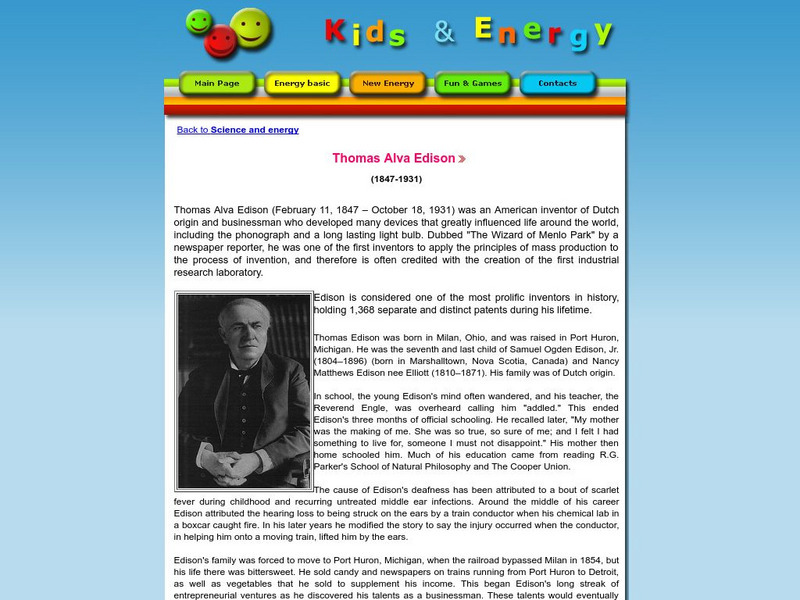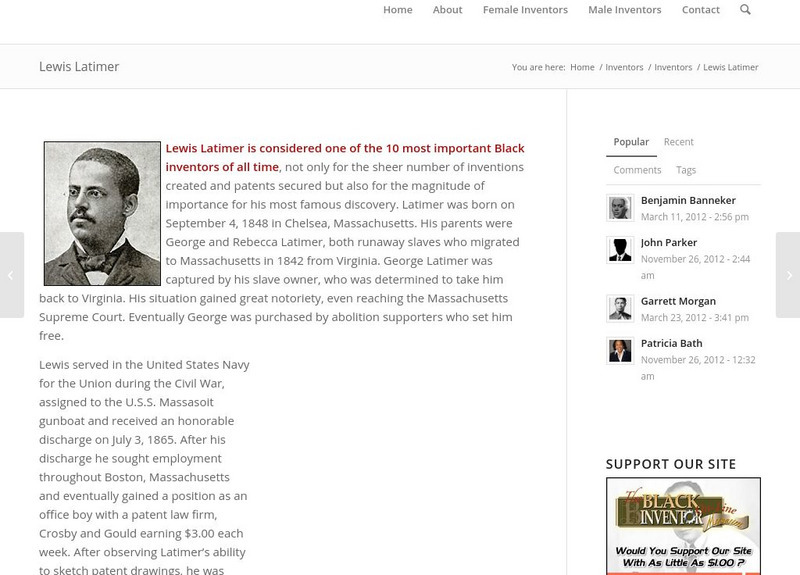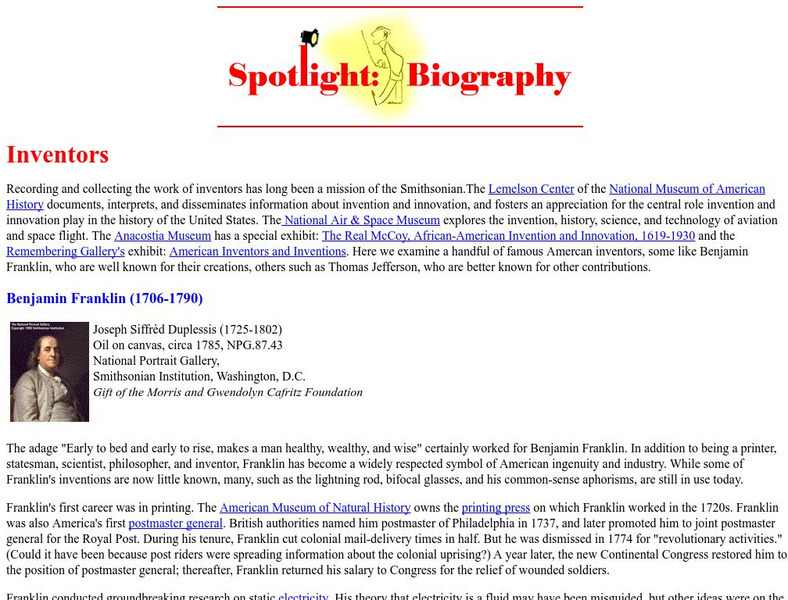Curated OER
National Park Service: Thomas Edison National Historical Park: Edison Biography
Here is a very detailed biography of Thomas Edison ranging from his boyhood and his work as a telegrapher, moving on to his invention of the phonograph and incandescent light bulb, and finally, a description of his laboratories where he...
Smithsonian Institution
Lemelson Center: Thomas Edison's Places of Invention
An article by Paul Israel from the Prototype newsletter discusses the various laboratories used by Thomas Edison as he was developing his inventions.
Science Struck
Science Struck: Facts About Thomas Edison
Read about the life of Thomas Edison and his many inventions.
Houghton Mifflin Harcourt
Harcourt: Biographies: Thomas Edison
A good description of the inventions and life of this bright and ambitious man. As inventor of the light bulb, phonograph, movie camera and many others, Edison lived a very inspiring life. In Spanish.
PBS
Pbs: Who Made America?: Innovators: Thomas Edison
The "Wizard of Menlo Park" brought the world electric light, recorded music, and the movies, among other things, and turned innovation into a science by inventing the research laboratory.
Energy for Sustainable Development
Esd Bulgaria: Kids & Energy: Energy Pioneers: Thomas Alva Edison
A profile of Thomas Alva Edison, who lived from 1847 to 1931, an American who made many important inventions, such as the electric light bulb. A timeline of his inventions is provided here.
Science4Fun
Science4 Fun: Light Bulb
Learn about the early developments of the invention of the incandescent light bulb and Thomas Edison's development of the first practical light bulb.
Science4Fun
Science4 Fun: Thomas Edison
Brief biographical sketch of Thomas Alva Edison, inventor of the light bulb and phonograph.
Smithsonian Institution
Lemelson Center: Tracing the Roots of America's Motion Picture Industry
In the late 1800's, Thomas Edison and his fellow inventors were key in the American film industry's boom.This web site provides a podcast and accompanying transcript tracing the roots of the film industry in America. Podcast [21:27]
Library of Congress
Loc: America's Story: Thomas Alva Edison
A variety of images, photographs, and information on the life of Thomas Alva Edison (1847-1931) can be found in the site by the Library of Congress. Information can be found here regarding his invention and influence on American society....
Massachusetts Institute of Technology
Mit: Invention of the Week: Thomas Alva Edison
As the inventor of the lightbulb, phonograph, and the printing telegraph, Thomas Alva Edison (1847-1931), improved the daily lives of everyday people.
Other
Black Inventor Online Museum: Lewis Latimer
The biography of the fascinating African-American inventor, Lewis Latimer. In addition to finding out about his development of the carbon filament for the incandescent lamp, you can read about his expertise in patent law, his association...
Smithsonian Institution
Smithsonian Education: Spotlight Biography Inventors
This site provides information on American inventors Benjamin Franklin, Robert Fulton, Eli Whitney, Thomas Jefferson, Isaac Singer, Wilbur Wright, Thomas Alva Edison, Elias Howe, and Alexander Graham Bell. It offers pictures from and...
Smithsonian Institution
Lemelson Center: Invention Features: Lewis Latimer
Smithsonian site features the life and many accomplishments of Lewis Latimer, the famous African-American inventor.
Florida State University
Florida State University: Magnet Lab: Electric Meter 1872
The invention of the light bulb quickly created the need to track people's electricity usage. In 1872, Samuel Gardiner built the first simple power meter: a lamp with an attached clock that recorded the time the light was on.








